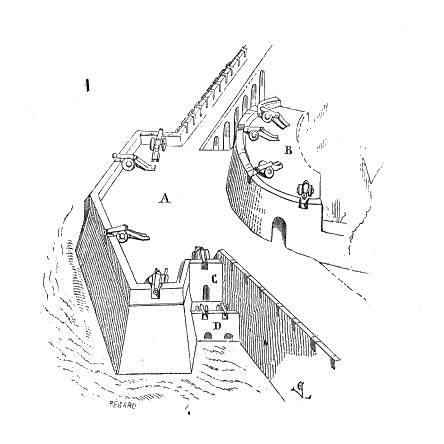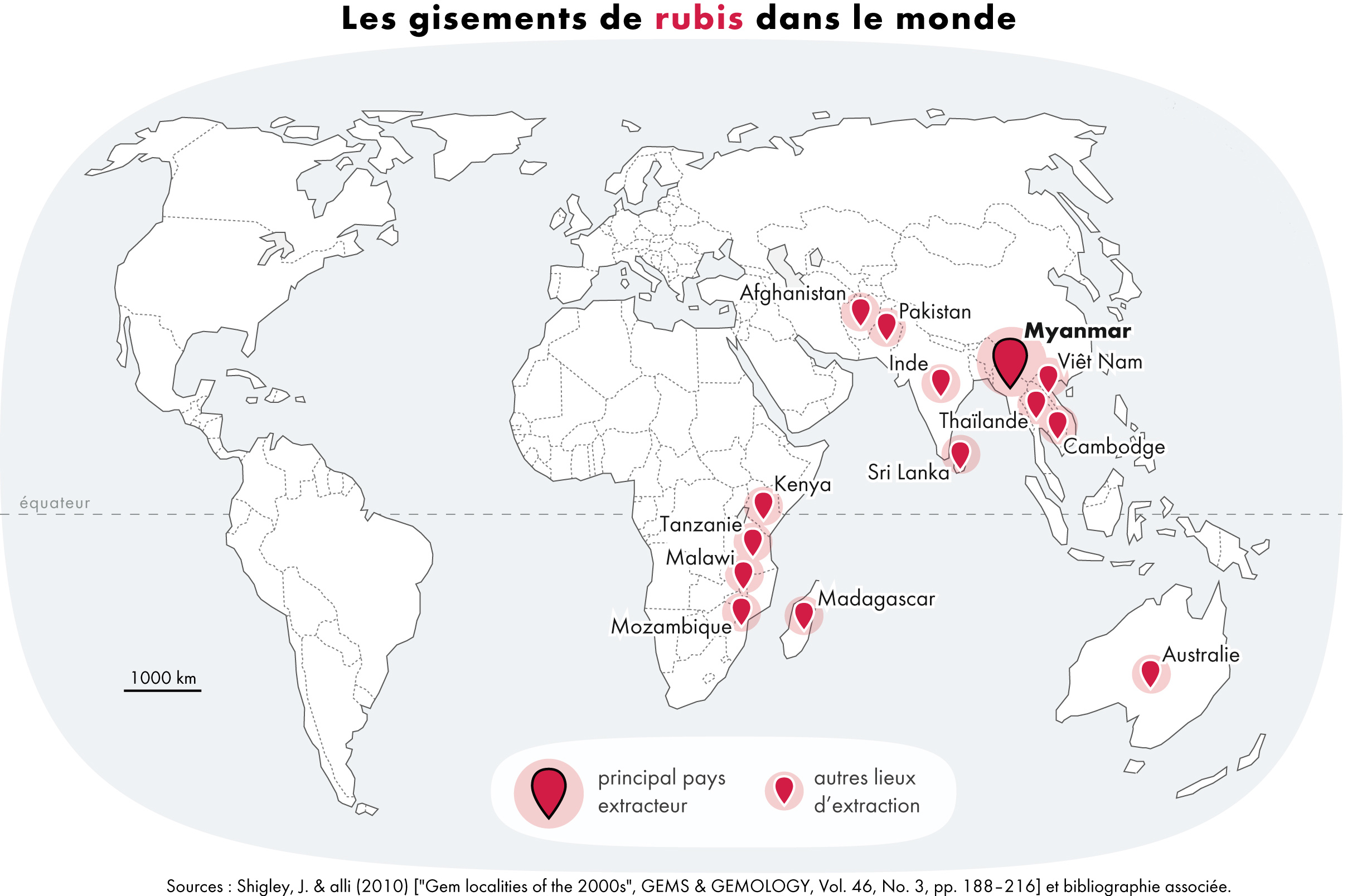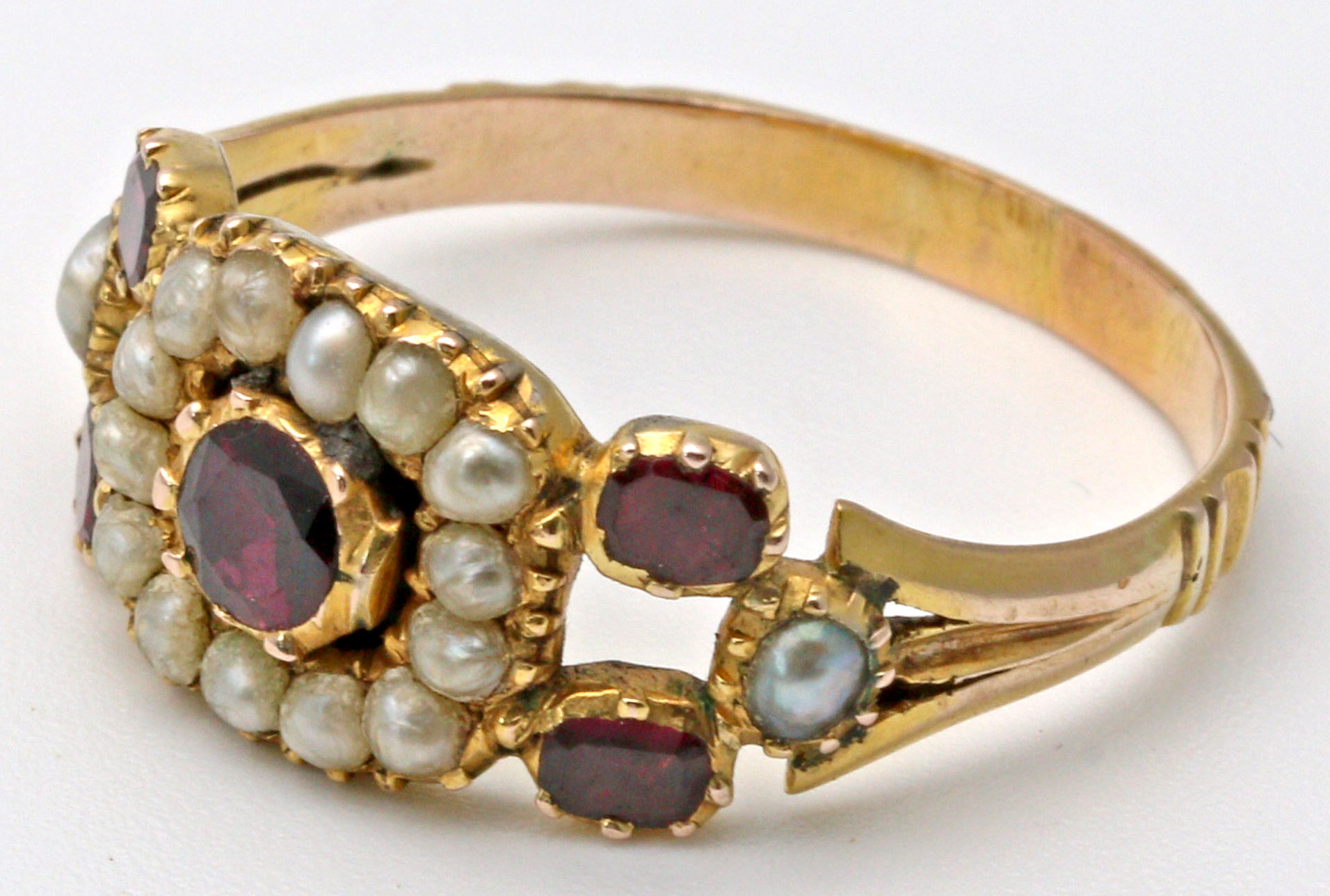|
Fort Friedrichsburg
300px, Friedrichsburg is situated in the western Pregel in this map of Königsberg from 1905. 300px, Fort Friedrichsburg in modern Kaliningrad Fort Friedrichsburg or Feste Friedrichsburg was a fort in Königsberg, Germany. The only remnant of the former fort is the Friedrichsburg Gate (, ) in Kaliningrad, Russia. History Construction of the fort began in 1657 during the Second Northern War by the order of Frederick William of Brandenburg-Prussia. The fort was built in place of a tollhouse on the southern shore of the Pregel River at the western edge of Königsberg.Albinus, p. 81 It was included within the new ring of Königsberg fortifications constructed from 1626 to 1634. Districts neighboring the fort were Vorstadt to the east, Nasser Garten to the southwest outside of the city walls, and Lastadie to the north across the river. Construction of the fort was resented by the constituent towns of Königsberg, especially Kneiphof. Friedrichsburg was designed by Christian O ... [...More Info...] [...Related Items...] OR: [Wikipedia] [Google] [Baidu] |
Königsberg Stadtplan 1905
Königsberg (; ; ; ; ; ; , ) is the historic Germany, German and Prussian name of the city now called Kaliningrad, Russia. The city was founded in 1255 on the site of the small Old Prussians, Old Prussian settlement ''Twangste'' by the Teutonic Knights during the Northern Crusades, Baltic Crusades. It was named in honour of King Ottokar II of Bohemia, who led a campaign against the pagan Old Prussians, a Baltic tribe. A Baltic Sea, Baltic port city, it successively became the capital of the State of the Teutonic Order, the Duchy of Prussia and the provinces of East Prussia and Province of Prussia, Prussia. Königsberg remained the coronation city of the Prussian monarchy from 1701 onwards, though the capital was Berlin. From the thirteenth to the twentieth centuries on, the inhabitants spoke predominantly German language, German, although the city also had a profound influence upon the Lithuanian and Polish cultures. It was a publishing center of Lutheranism, Lutheran literatu ... [...More Info...] [...Related Items...] OR: [Wikipedia] [Google] [Baidu] |
University Of Königsberg
The University of Königsberg () was the university of Königsberg in Duchy of Prussia, which was a fief of Poland. It was founded in 1544 as the world's second Protestant Reformation, Protestant academy (after the University of Marburg) by Duke Albert, Duke of Prussia, Albert of Prussia and charted by the King Sigismund II Augustus. It was commonly known as the Albertina and served as a Protestant counterpart to the Catholic Jagiellonian University in Kraków. Following World War II, the city of Königsberg was transferred to the Soviet Union according to the 1945 Potsdam Agreement, and renamed Kaliningrad in 1946. The Albertina was closed and the remaining German population Flight and expulsion of Germans (1944–1950), expelled, by the terms of the Potsdam Agreement. Today, the Immanuel Kant Baltic Federal University in Kaliningrad claims to maintain the traditions of the Albertina. History Albert, former Grand Master of the Teutonic Order and first Duchy of Prussia, Duke of P ... [...More Info...] [...Related Items...] OR: [Wikipedia] [Google] [Baidu] |
Peter I Of Russia
Peter I (, ; – ), better known as Peter the Great, was the Tsar of all Russia from 1682 and the first Emperor of all Russia from 1721 until his death in 1725. He reigned jointly with his half-brother Ivan V until 1696. From this year, Peter was an absolute monarch, an autocrat who remained the ultimate authority and organized a well-ordered police state. Much of Peter's reign was consumed by lengthy wars against the Ottoman and Swedish empires. His Azov campaigns were followed by the foundation of the Russian Navy; after his victory in the Great Northern War, Russia annexed a significant portion of the eastern Baltic coastline and was officially renamed from a tsardom to an empire. Peter led a cultural revolution that replaced some of the traditionalist and medieval social and political systems with ones that were modern, scientific, Westernized, and based on radical Enlightenment. In December 1699, he introduced the Julian calendar, and in 1703, he introdu ... [...More Info...] [...Related Items...] OR: [Wikipedia] [Google] [Baidu] |
Seven Years' War
The Seven Years' War, 1756 to 1763, was a Great Power conflict fought primarily in Europe, with significant subsidiary campaigns in North America and South Asia. The protagonists were Kingdom of Great Britain, Great Britain and Kingdom of Prussia, Prussia versus Kingdom of France, France and Habsburg monarchy, Austria, the respective coalitions receiving by countries including Portuguese Empire, Portugal, Spanish Empire, Spain, Electorate of Saxony, Saxony, Age of Liberty, Sweden, and Russian Empire, Russia. Related conflicts include the Third Silesian War, French and Indian War, Carnatic wars, Third Carnatic War, Anglo-Spanish War (1762–1763), Anglo-Spanish War (1762–1763), and Spanish–Portuguese War (1762–1763), Spanish–Portuguese War. Although the War of the Austrian Succession ended with the Treaty of Aix-la-Chapelle (1748), none of the signatories were happy with the terms, and it was generally viewed as a temporary armistice. It led to a strategic realignment kn ... [...More Info...] [...Related Items...] OR: [Wikipedia] [Google] [Baidu] |
Imperial Russian Army
The Imperial Russian Army () was the army of the Russian Empire, active from 1721 until the Russian Revolution of 1917. It was organized into a standing army and a state militia. The standing army consisted of Regular army, regular troops and two forces that served on separate regulations: the Cossacks, Cossack troops and the Islam in Russia, Muslim troops. A regular Russian army existed after the end of the Great Northern War in 1721.День Сухопутных войск России. Досье [''Day of the Ground Forces of Russia. Dossier''] (in Russian). TASS. 31 August 2015. During his reign, Peter the Great accelerated the modernization of Russia's armed forces, including with a decree in 1699 that created the basis for recruiting soldiers, military regulations for the organization of the a ... [...More Info...] [...Related Items...] OR: [Wikipedia] [Google] [Baidu] |
Counterscarp
A scarp and a counterscarp are the inner and outer sides, respectively, of a ditch or moat used in fortifications. Attackers (if they have not bridged the ditch) must descend the counterscarp and ascend the scarp. In permanent fortifications, the scarp and counterscarp may be encased in stone. In less permanent fortifications, the counterscarp may be lined with paling fence set at an angle so as to give no cover to the attackers, but to make advancing and retreating more difficult. If an attacker succeeds in breaching a wall, a coupure can be dug on the inside of the wall to hinder the forlorn hope, in which case the side of the ditch furthest from the breached wall and closest to the centre of the fortification is also called the counterscarp. Counterscarp gallery These are tunnels or "galleries" that have been built behind the counterscarp wall inside the moat or ditch. Each gallery is pierced with loopholes for musketry, so that attacking forces which enter the moat can be ... [...More Info...] [...Related Items...] OR: [Wikipedia] [Google] [Baidu] |
Covered Way
In military architecture, a covertway or covered way (, ) is a path on top of the counterscarp of a fortification. It is protected by an embankment which is made up by the crest of the glacis. It is able to give the fort's garrison a position beyond the ditch, as well as a continuous line of communication around the outwork An outwork is a minor fortification built or established outside the principal fortification limits, detached or semidetached. Outworks such as ravelins, lunettes (demilunes), flèches and caponier A caponier is a type of defensive structur ...s. An enlarged area within a covertway designed to allow troops to assemble on it is known as a place-of-arms. References Fortification (architectural elements) {{fort-stub ... [...More Info...] [...Related Items...] OR: [Wikipedia] [Google] [Baidu] |
Ravelin
A ravelin is a triangular fortification or detached outwork, located in front of the innerworks of a fortress (the curtain walls and bastions). Originally called a ''demi-lune'', after the ''lunette'', the ravelin is placed outside a castle and opposite a fortification curtain wall. The ravelin is the oldest and at the same time the most important outer work of the bastion fortification system. It originated from small forts that were supposed to cover the bridge that led across the moat to the city or fortress gate from a direct attack. From this original function, to protect the gate bridge, also comes its original Italian name "''rivellino''" (which means small bank work or with the German expression common for it: ''Brückenkopf'' – "bridge head"). Therefore, the ravelin was at first only a small work, which should only make the access to the bridge in front of the fortress gates more difficult. When it was realized in the 16th century that this would generally provide ... [...More Info...] [...Related Items...] OR: [Wikipedia] [Google] [Baidu] |
Cavalier (fortification)
A cavalier is a fortification which is built within a larger fortification, and which is higher than the rest of the work. It usually consists of a raised platform within a fort or bastion, so as to be able to fire over the main parapet without interfering with the fire of the latter. Through the use of cavaliers, a greater volume of fire can be obtained, but its greater height also makes it an easier target for a besieger's guns. There are two types of cavaliers: *Common cavalier – a raised gun platform without any additional defensive features *Defensible cavalier – a raised gun platform surrounded by a ditch. If the ditch cuts across the bastion's terreplein and is supported by cuts, the cavalier can also be considered as a retrenchment Retrenchment (, an old form of ''retranchement'', from ''retrancher'', to cut down, cut short) is an act of cutting down or reduction, particularly of public expenditure. Political usage The word is familiar in its most general sense from ... [...More Info...] [...Related Items...] OR: [Wikipedia] [Google] [Baidu] |
Diamond
Diamond is a Allotropes of carbon, solid form of the element carbon with its atoms arranged in a crystal structure called diamond cubic. Diamond is tasteless, odourless, strong, brittle solid, colourless in pure form, a poor conductor of electricity, and insoluble in water. Another solid form of carbon known as graphite is the Chemical stability, chemically stable form of carbon at Standard temperature and pressure, room temperature and pressure, but diamond is metastable and converts to it at a negligible rate under those conditions. Diamond has the highest Scratch hardness, hardness and thermal conductivity of any natural material, properties that are used in major industrial applications such as cutting and polishing tools. Because the arrangement of atoms in diamond is extremely rigid, few types of impurity can contaminate it (two exceptions are boron and nitrogen). Small numbers of lattice defect, defects or impurities (about one per million of lattice atoms) can color ... [...More Info...] [...Related Items...] OR: [Wikipedia] [Google] [Baidu] |
Ruby
Ruby is a pinkish-red-to-blood-red-colored gemstone, a variety of the mineral corundum ( aluminium oxide). Ruby is one of the most popular traditional jewelry gems and is very durable. Other varieties of gem-quality corundum are called sapphires; given that the rest of the corundum species are called as such, rubies are sometimes referred to as "red sapphires". Ruby is one of the traditional cardinal gems, alongside amethyst, sapphire, emerald, and diamond. The word ''ruby'' comes from ''ruber'', Latin for red. The color of a ruby is due to the presence of chromium. Some gemstones that are popularly or historically called rubies, such as the Black Prince's Ruby in the British Imperial State Crown, are actually spinels. These were once known as "Balas rubies". The quality of a ruby is determined by its color, cut, and clarity, which, along with carat weight, affect its value. The brightest and most valuable shade of red, called blood-red or pigeon blood, commands a lar ... [...More Info...] [...Related Items...] OR: [Wikipedia] [Google] [Baidu] |
Pearl
A pearl is a hard, glistening object produced within the soft tissue (specifically the mantle (mollusc), mantle) of a living Exoskeleton, shelled mollusk or another animal, such as fossil conulariids. Just like the shell of a mollusk, a pearl is composed of calcium carbonate (mainly aragonite or a mixture of aragonite and calcite) in minute crystalline form, which has deposited in concentric layers. More commercially valuable pearls are perfectly round and smooth, but many other shapes, known as baroque pearls, can occur. The finest quality of natural pearls have been highly valued as gemstones and objects of beauty for many centuries. Because of this, ''pearl'' has become a metaphor for something rare, fine, admirable, and valuable. The most valuable pearls occur spontaneously in the wild but are extremely rare. These wild pearls are referred to as ''natural'' pearls. ''Cultured'' or ''farmed'' pearls from Pinctada, pearl oysters and freshwater mussels make up the majority o ... [...More Info...] [...Related Items...] OR: [Wikipedia] [Google] [Baidu] |








